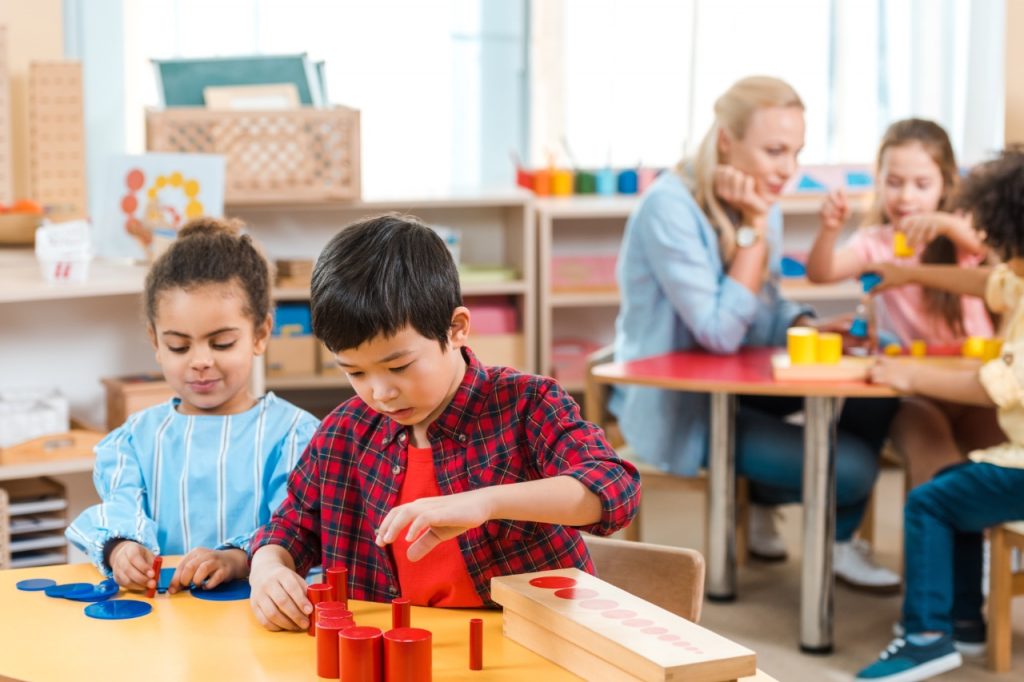The Subjects of Montessori Education
The main subjects taught in Montessori education at the Primary level (ages 3-6 years) are:
Practical life
Prepares children for life and has lessons like putting on shoes and coats independently or cleaning a work surface after artwork. The aim is to foster independence and self-confidence as they learn to perform simple tasks in their environment.
Sensorial
This contains exercises in the form of activities that can be felt, handled, and manipulated. The practice of these improves children’s environmental awareness and better attunes them to perceive and interact with their surroundings.
Language
According to Maria Montessori, the founder of Montessori, the most sensitive period for language acquisition is from birth to six years old. The Language curriculum includes a number of activities such as reading stories, discussions at circle time, and classification of objects.
Math
Montessori materials teach math concepts using concrete materials, like these. Many math activities are referred to as “games” and played in groups, making it fun and paving the way for socialization. Math lessons start with concrete materials, gradually leading to the abstract. The curriculum also includes Geography and Cultural studies, a foreign language or a second language as well as Music and Movement to develop coordination, balance, and enjoyment of rhythm and music.
The Features of Montessori philosophy
To me, the most admirable features of Montessori philosophy are quite separate from the actual curriculum. Here are the aspects that I have grown to love as a parent over the years:
Self-directed learning
The focus of Montessori is to bring out the best in each child through self-discovery, i.e., the child is primarily self-taught at his/her own pace. She can repeat a lesson as many times as she likes. Allowing a child to choose the lesson he wants to learn puts him in charge and ensures he’s completely interested in learning.
Value the process over the end result
This is such a key life lesson – my child learns it every day in the classroom, which is all about building one’s knowledge in an orderly step-by-step process, growing it in a natural progression.
Mixed-age classrooms
A Primary level class has kids between the ages of 3 to 6 years in a collaborative learning experience. It is a great practice in a real-life work environment! Older kids practice leadership skills, helping younger ones with the lessons they learned a year or two ago and strengthen their own learning in the process.
A Child-sized classroom
The classroom is truly a world scaled down to your child – all furniture is child-sized, and all learning materials are placed at the eye-level of the child. There is an absence of clutter – less is truly more here, and there is a conscious effort to not overwhelm or overstimulate the children.
Nature-oriented learning
Most Montessori materials, furniture, tools, and utensils are made of natural materials, and there is an emphasis on re-use and recycling. Their curriculum includes lessons on respect, peace, gardening, cooking, and experimentation – all ingredients for a harmonious and joyful life.

